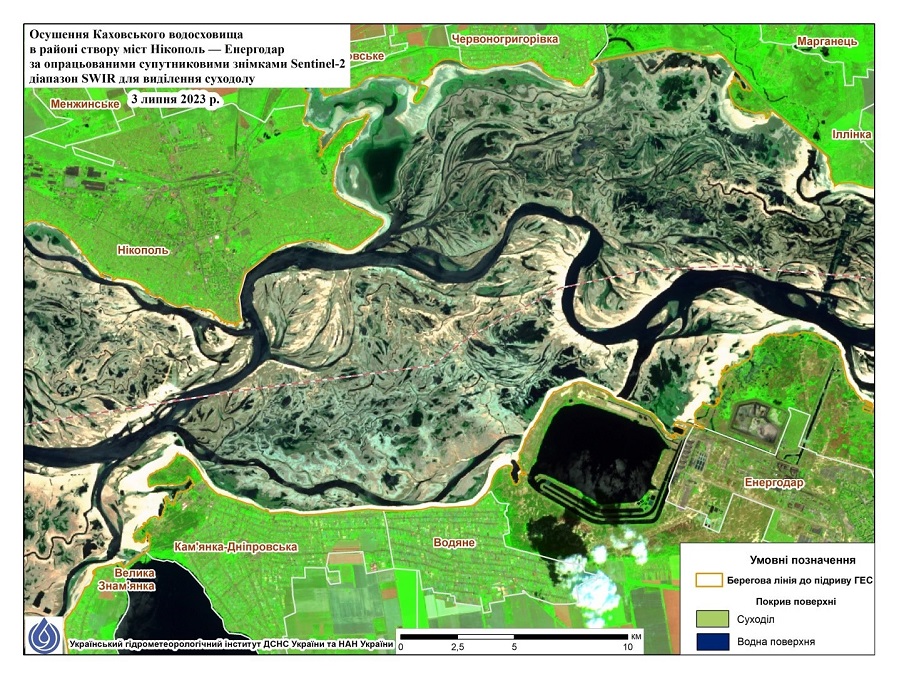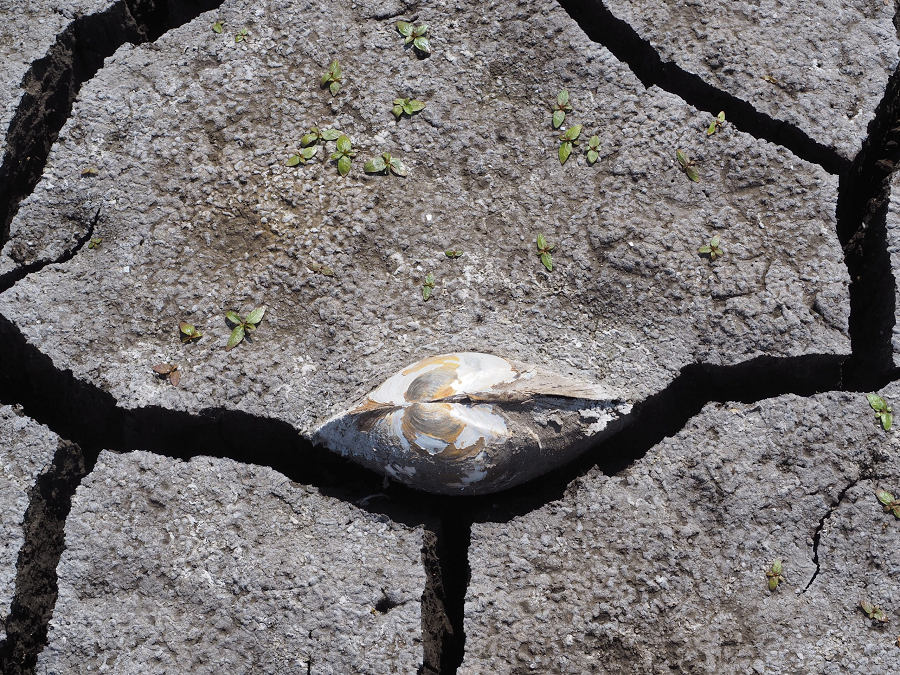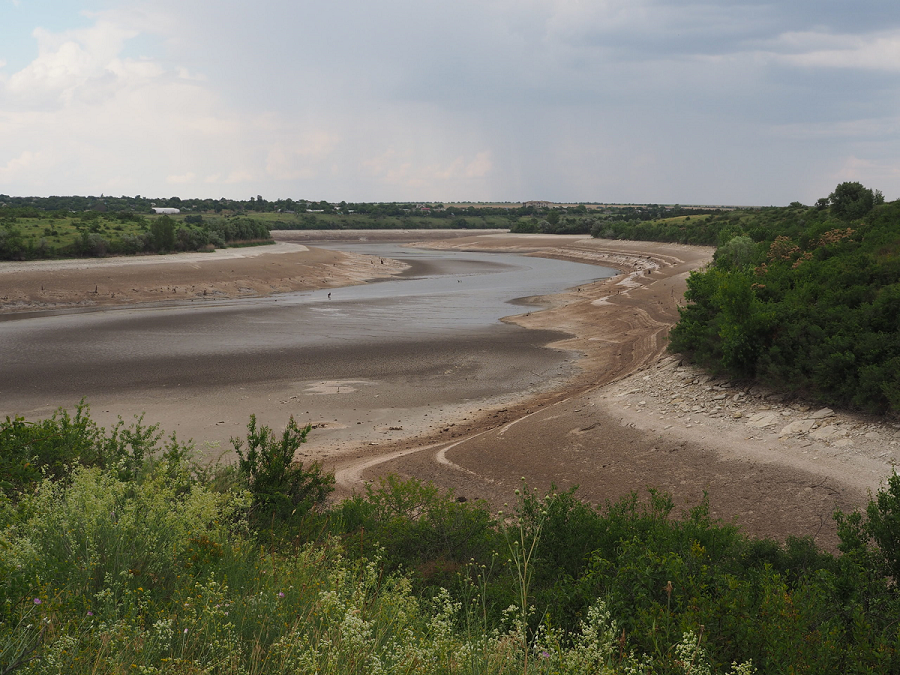On 7 July, Ukraine celebrated Dnipro Day. However, this year's river event was overshadowed by a bitter reality—the devastating humanitarian and ecological consequences caused by the destruction of the Kakhovka Dam on 6 June 2023. The dam, completed in 1956, was crucial for hydroelectric power, irrigation, and navigation on the lower Dnipro River in Kherson Oblast. It was the sixth and last dam in the Dnieper reservoir cascade.

After the Russian military attack, the large Kakhovka reservoir quickly emptied in just a few days. However, downstream, the flooded land remained wet and polluted for many weeks. Similar to other flood events, sewage, entrenched oil tanks, and other local contaminants spilled over urban and agricultural areas. Once the fine sludge from the reservoir dries up, it will form a hard seal on the surface that will be difficult to remove.
Loads of pollution spread into the Black Sea
Over many years, the sludge and sediment that accumulated behind the dam contained a large amount of old pollution – a dirty heritage since Soviet times. When the dam was breached, all of this pollution was washed downstream into the big sink - the Black Sea: it is probably the worst concentrated spill ever of this sea.
A good guess of the type of pollutants that got spilled can be derived from the first Dnipro basin pollution screening, which was undertaken during the EU Water Initiative Plus project in October 2020. It then indicated for 27 investigated sites across the Dnipro basin some small but also several serious cases of water pollution: among the 4 sites along the Dnipro the one downstream from Zaporizhzhia showed very high values for cadmium, copper and organic compounds in fish.
This dangerous mix of chemicals is now gradually spreading not only over riverine and coastal areas but also into the marine ecosystem of the north-western Black Sea. As a result, it's impacting protected and ecologically sensitive regions, including the large Phyllophora (red algae) fields https://www.youtube.com/watch?v=yQjEvgIp3ek called “Corals of the Black Sea”.
Additionally, a significant amount of washed soil and organic matter led to severe eutrophication of the Black Sea. Toxic algae covered the sea's surface, reducing the oxygen available for marine life to thrive.

Another problem arises from the marine litter, including doors, clothing, tents, books, and other items from flooded houses, now polluting the sea. Although these items will eventually break down, the current situation has already caused the death of half of the mussels' population responsible for water purification.
Additional side-effects for the population
Enduring wetlands may become substrates for human diseases but also of mosquitoe plagues over the summer 2023: related epidemiological monitoring is undertaken by Ukrainian health agencies.
Land mines, ammunition and military equipment got also spread over the flood land and into the sea, posing other enormous hardly visible threats.

Despite the nearby military frontline, Ukrainian scientists have begun monitoring biodiversity in various ecosystems at the bottom of the Kakhovka Reservoir, which belongs to the Kamianska Sich National Nature Park. Approximately 200,000 hectares of the river lake now appear "deserted," with a risk of dust clouds blowing into nearby residential areas. However, this land is expected to undergo a transformation soon: the first plants have already started sprouting, and various pioneer grass and tree seeds will trigger a natural self-restoration process. In a few years, a young forest will develop on the former reservoir bed.
Imagining the future of this region
The most significant issue facing the region right now is the loss of a crucial water supply for tens of thousands of local people and a significant agricultural area. Restoring this water service is the most significant challenge for Ukrainian water agencies in the next 2-3 years.
Re-building the dam and reservoir would take several years. However, experts from the Environment Agency Austria suggest that it should not be the only option considered for this river area. Since the water supply problem needs urgent resolution, the former reservoir might after the war no longer need to serve its main purpose and could instead be left as a protected, self-restoring natural river area.
Read the statement by High Representative Josep Borrell and Commissioner for Crisis Management Janez Lenarčič on the destruction of the Kakhovka dam : https://neighbourhood-enlargement.ec.europa.eu/news/ukraine-statement-high-representative-josep-borrell-and-commissioner-crisis-management-janez-2023-06-06_en

